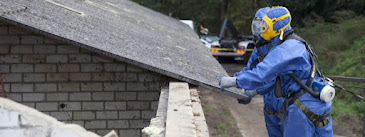How Environmental Remediation Methods Are Used
To decontaminate polluted soils, there are several environmental remediation methods used to lessen the chance of causing more harm at the site and to the environment especially all through heavy rains. This includes on-site treatment and off-site removal of the impure soil.
But for reason that these cannot provide total cleaning of the
contaminated land, Environmental
Remediation Services in New Jersey utilize more than one technique.
Isolating and Containing
Contaminated Soil
The land containing polluted soil is cleaned up through the substantial
taking away of contaminated soil. In this clean-up method, people dump the soil
in a landfill or incinerate in. On the other hand, the downside of this method
is that it can cause new problems such as air pollution through burning toxic material or incarcerating the polluted soil devoid of decontamination.
Liquid or solid contaminants can chemically or physically combine
with soil particles. The type of contamination will settle on the treatment
method that will be used. By and large heavy metals are broken down into
compounds that can't react with other materials at the same time as toxic
organic chemicals like solvents and pesticides are incinerated.
In landfills, a containment method involving Environmental Remediation Services in New Jersey is used and it incorporates
the use of resistant layers of plastic liners and dense clay caps. In order to
prevent spreading the contamination from rainwater run-off the soil is cut off
on-site.
Soil Washing
This is a pump-and-treat method wherein chemical solvents are used
to do away with toxic materials from the soil. Polluted soil is cleaned up in
place devoid of the need to excavate. Chemicals are pumped into the ground so
that detrimental toxins are flushed away from the ground moving them en route
to wells that pump it out for processing. This method works finest if the soil
beneath the polluted area is akin to clay meaning not permeable.
Chemical treatments by means of organic and inorganic acids and
chelating agents are used to do away with heavy metals. However, secondary
hazardous wastes are generated by this method which would even require supplementary
treatment.
Bioremediation method
This method is well thought-out to be the safest for the
environment. It entails inciting the growth of naturally occurring waste-eating
microorganisms in order to debase organic contaminants in the soil. This can be
carried out at the site or subsequent to excavation.
Contaminants are broken down as a result of microorganisms as they
make use of them as a source of food all through the aerobic processes, which
require oxygen. In general, the slurry bioremediation technique will be used
by remediation service providers in case they used the bioremediation method subsequent
to removing the soil. This will keep the soil suspended and the microbes in
contact with the contaminants by means of mixing the soil in water.
Remediation service providers work in environmental building projects and help with disaster recovery. They are a team of environmental experts that can help you address any challenging contamination issue all the way by employing good teamwork, the best method, and the right tools.



Comments
Post a Comment